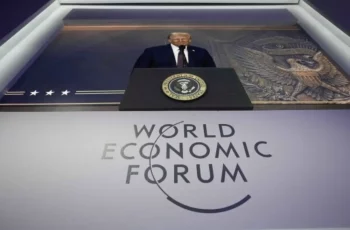Not Really. The Guarantee Problem May Fail Under Scrutiny
President Trump has offered Ukrainian President Volodymyr Zelensky security guarantees which Mr. Trump describes as “like Article V” of the NATO Treaty. Zelensky has apparently signed onto the Trump offer and potentially has agreed that some “territorial swaps” will be needed to make a deal with Russia. Trump has reported to his European interlocutors who came to the White House to back up Zelensky. He told them more or less the same thing, according to reports, and told German Chancellor Friedrich Merz, who pushed for an immediate ceasefire, that a ceasefire ahead of a deal was off the table.

We don’t know what security guarantees mean or how they would be implemented. The Russians will be asking a lot of questions about the idea, if they have not already done so. Trump said he would be calling Russian President Vladimir Putin as soon as today, July 18, 2025, where it is already after midnight as this is written.

Here are the likely questions about security guarantees.
(1) Will the US send troops to Ukraine (as the European so-called “coalition of the willing” want to do) or will the assurances to Kiev be political in nature?
(2) Will the US set up any kind of infrastructure in Ukraine as part of the assurances to Ukraine?
(3) While Trump has ruled out any NATO membership for Ukraine, will the Europeans, or some of then, be part of the Trump guarantee?
(4) Article 5 of the NATO treaty, which is the effective collective security provision of the Treaty, requires consensus of all NATO members. Is Trump thinking of a quasi-NATO-like arrangement that also will require consensus for activation? One should note that not all European countries plan to support any troop presence in Ukraine even for security assurances. Specifically, Germany, Italy and Poland have said “no” to proposals from the UK and France.
(5) NATO is a treaty organization that was formally approved by its members, meaning the Treaty was signed and ratified by each country’s legislative authority. If Trump’s security guarantees are not under a Treaty format, the deal might not be supported by a future President. If Trump wants to sign a Treaty with Ukraine, he will need to convince Congress it is in the US national interest. This may not be as easy as it would seem because many will start to question exactly what would oblige the US to take military action if there is a violation of the final deal on Ukraine. It is obvious this is tricky waters, and the Trump administration will have to skip a lot of rope to sell the idea of an actual guarantee that involves the US military in a war with Russia, which is, as I am sure some have noticed, a nuclear-armed power.
In the United States a Treaty, for ratification, needs a two thirds vote in the US Senate. There may well be enough isolationists in Congress to block ratification, if Trump goes for a treaty. Down the road one is reminded of Woodrow Wilson’s failure to achieve Senate backing for the Treaty of Versailles. There are more recently examples of treaties that ran into trouble. These include the Comprehensive Nuclear Test Ban Treaty, the Convention on Elimination of All Forces of Discrimination Against Women and the Law of the Sea Convention.
(6) The Russians have demanded a smaller Ukrainian military and a neutral Ukraine. Will this demand be honored in any way?
(7) We don’t yet have any idea on the territories Ukraine will yield, or the actual borders (since the Russians do not control all of Donbas). This will be a tough negotiation, and Putin will be under heavy pressure from his army that, for the most part, is gaining ground in Donbas and elsewhere.
Trump faces an uphill battle selling US guarantees for Ukraine, notwithstanding whether they require US boots on the ground and if others will join the US, such as the UK and France. In one sense, with a smaller group, the Russians will regard the future risk as greater than the NATO risk because the UK and French are aggressively promoting their participation in armed conflict against Russia. A so-called coalition of some-willing looks like a non-starter for Russia.
All of this means that what looks like a success at the White House may devolve into another casualty of the Ukraine war. The offer of guarantees may fail under scrutiny, either by Russia or by the US Congress.
Source: author’s blog










Comments